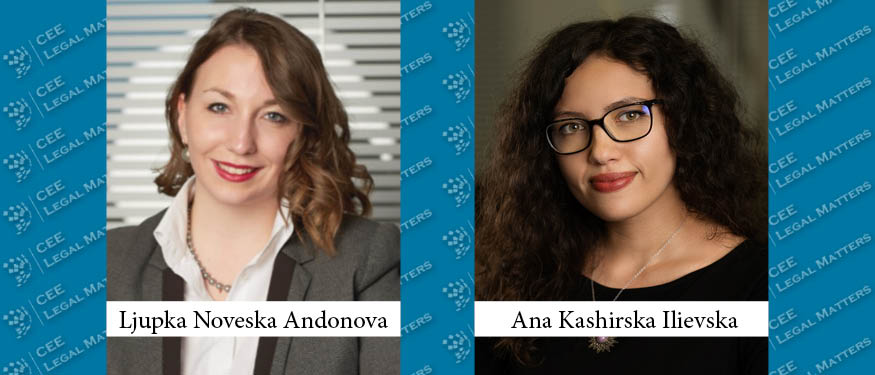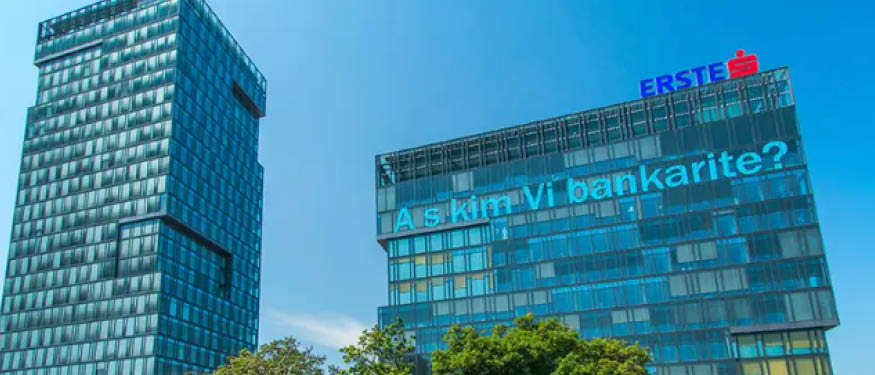The Hungarian real estate and housing market is experiencing golden days. Although the market took a serious hit during the financial crisis in 2008, today enormous sums are again being invested in office buildings, shopping malls, hotels, residential areas, and retail. In order to map the underlying reasons behind the market’s boom, and to better understand how the country is dealing with the high demand for development lands and properties, CEE Legal Matters sat down with six Hungarian lawyers specialized in Real Estate & Construction and a Legal Counsel from Prologis, a Real Estate & Supply Chain Logistics company.
Round Table Participants:
- Judit Kovari – Dentons (Host)
- Attila Ungar – Lakatos, Koves es Tarsai
- Christopher Noblet – Hogan Lovells
- Gabriella Galik – KCG Partners
- Ildiko Kollar – Prologis
- Sandor Haboczky – Kapolyi Law Firm
- Szilard Kui – DLA Piper
CEELM: What has led to the current boom on the Hungarian Real Estate market?
Christopher Noblet: I think the Hungarian real estate market has really been on a long journey over the last ten years since the global financial crisis. It has moved up considerably in the last couple of years. International funds are looking to put money into real estate here, whether in the form of offices, logistics, retail, or residential. Investors are seeing Hungary now as leading with pricing, product, and so on, and investment is much more in the forefront of their minds when looking at CEE than it was as recently as a couple of years ago. Speaking of pricing, reports indicate that if you look at yields around the region, Hungary appears to benefit from a positive yield difference, and if your view is that there are no additional risks investing right now in the country, this makes the country an obvious destination for investment right now.
Judit Kovari: I fully agree with Christopher. Hungary was seriously hit by the 2008 financial crisis – especially its real estate market – however, in the last couple of years we are experiencing a very positive trend, and we are getting close to the pre-crisis level. I’m not familiar with the latest market statistics, but definitely the investment volume is increasing year by year. There are certainly different views and expectations regarding prospects for the future: there are investors who are less optimistic and more cautious, who – especially if they acquired assets at a relatively low price – are mostly trying to realize their gain now. Others, who are more optimistic, and putting their trust in the potential of the market, are still investing. These two types of attitudes keep the local market moving nowadays.
Szilard Kui: I am also cautious, actually, because one of the major driving forces behind this phenomenon was the enormous amount of capital put into the Hungarian real estate funds, and there was huge competition between these funds to acquire commercial properties and make returns. In this perspective,I am a bit cautious because I don’t see this huge influx of money continuing to flow into these real estate funds, as they will see compressing returns and greater competition for investors’ money from other investment vehicles and types, and probably also from the stock exchange.
The other issue is that I think that there seems already to be a shortage of investment properties to buy. Currently, there are only two or three first class investment products on the market. Everyone is looking at Mill Park right now, to see if Skanska is going to sell it at six percent, or a little bit above that. I think everyone is waiting to see how this deal will go, and if it goes for six, or a little bit below, it will definitely be a turning point, and people will start referencing the transaction and aiming for a yield below that number.
Attila Ungar: First of all, yes, for the last two years the number of real estate transactions has substantially increased in Hungary. There are various reasons for that, but the difficulty is that the period from Hungary’s EU accession up until the crisis was too short to develop high-quality real estate products. 2004 was the accession year, and then the market opened up for various foreign institutional investors. Before it had been dominated mainly by Austrian, Israeli, and some German investors, but after 2004 it opened up to the larger public, until 2008, when the crisis came. There were a large number of assets which were not possible to sell for about a decade, and one of the reasons for the activity in 2016-2017 was that these investors had to exit. Some funds were closing down, and they were forced to sell their assets, sometimes not for the best price, and practically this brought the market back to its feet.
Second, we have to acknowledge that there is a large amount of cash flowing in from the global market, and everybody is looking for investment, and as Christopher mentioned, there is still a yield gap between Hungary and other countries in the region. If you look at Warsaw and Budapest, there is still about 1-2% yield difference, and that’s why investment is looking for places here. On the other hand, I think that Hungary was always exposed to global economic trends, meaning that whatever happens on the global market, will immediately hit this market as well. So my personal view is that the money which is not spent elsewhere is still continuing to flow in. The other aspect is that local players have become much more active than they were in 2007-2008. There is a strong group of Hungarian investors like the OTP and Erste real estate funds buying up assets. These new players are appearing on the market in numbers, which gives a whole new angle to the market’s activity.
Gabriella Galik: Hungary is indeed a good place for investors right now, and not necessarily just real estate – other sectors are also going well. Wages are still lower than in other parts of the region and we have an available workforce. What we see is that many of investors are deciding to come here instead of Romania or Slovakia, either around Budapest, or to the countryside, although it is getting more and more difficult to find a place near the capital. One of our clients looked for two years to find a good location near Budapest.
We should not forget that the Hungarian state itself has become an important player on the real estate market. I think it started with the Hungarian National Bank’s transactions and other important acquisitions in the last couple of years. This is the same as with industrial developments – we see these industrial park developments conducted and led by the Hungarian government. This is another factor for increased market activity.
Sandor Haboczky: The country’s fiscal stability is also good for the investments in the sector and is supporting the growth. The National Bank implements fiscal measures in a way to keep the interest rates low and the country attractive for foreign investments. In addition, both the government and the National Bank seem determined to keep the momentum alive by stimulating HUF-denominated mortgage financing of households as well to provide a favorable climate for project financing. The Hungarian forint qualifies as a stable and predictable currency, and the EUR/HUF exchange rate is also quite constant – it might have only changed or fluctuated slightly through the past couple of years.
Another factor we have recently seen is the disposal of distressed assets acquired by certain investors towards the end of the crisis years, whether refurbished or restructured since then or not.
Ildiko Kollar: I think it is important to mention that currently there are not too many products on the market, and therefore players in the real estate sector – be it logistics, be it offices – are starting new speculative developments. And this is very typical for logistics; during the crisis there were no speculative developments at all, and now we know of at least three speculative developments that have come on the market this year alone.
Attila Ungar: I think this is especially true for your sector, logistics, where there is a shortage of products, and all competitors suffer from the same problem. Nonetheless, it is true that there is a shortage of development land in Budapest with good access. Reclassification is a time-consuming process, so everyone is looking for these types of products.
Ildiko Kollar: And that is why many developers, like the already-mentioned Hungarian state, for example, are going for secondary markets, like the countryside. There are other developers as well, who are expanding their markets, and choosing to go a bit further from Budapest.
Again, I can only speak from my sector, logistics, but the vacancy rate is unprecedented – somewhere around four percent on the logistics market – which means that if you need anything above 10,000 square meters, you cannot find it. During the crisis vacancy was 20%. This is why speculative developments stopped during the crisis. People were only building if they had a signed lease.
CEELM: Which are the most sought-after areas for investors? We saw a lot of action especially in shopping malls and maybe logistics – how are things in residential?
Christopher Noblet: I would say that offices are particularly in the focus. That’s where many international investors tend to look when they come to Budapest. It’s a market that is quite easy to understand. There is a lot of information on them, financing is relatively easy to obtain, and there are often fewer property problems. In my view institutional investors in this sector tend to be looking for big assets, like 100 million plus euros, or large portfolios, or mid-size office buildings with a value of 10-50 million euros.
Ildiko Kollar: I know that we are speaking about Hungary now, but there is a big difference between Hungary and other CEE countries. On the Czech or the Slovak markets there are secondary markets where international investors also go. Whereas I don’t think that this is the case in Hungary. Here, international investors go for the primary market, and there is no speculative development outside of Budapest.
Judit Kovari: The Hungarian market is indeed very centralized. I also agree that the pace of the recovery varies in the different sub-sectors on the market. The office sector traditionally takes the lead and is a key indicator of the trends of the real estate market. In the years of the crisis very few office buildings were constructed and despite the relatively high overall vacancy, actually there was a shortage of prime office space. In the last couple of years the rent levels have been increasing, providing a more attractive income stream for the investors. We have not experienced the same turn in the other sub-sectors yet, though the recent transactions in the retail market could generate more appetite for these assets as well.
Szilard Kui: This is a very interesting angle actually, because looking at the deals that we are currently doing, my feeling is that hotels are becoming the second-biggest investment asset instead of retail. From what I see, it seems that retail is sliding into third place.
Attila Ungar: One reason for this is the still existing plaza-stop. For those who don’t know it, since 2011 a special governmental permit was introduced which is required for building new retail units above 300 square meters. For this reason, the value of existing units has increased, because you can’t build anymore. I think that the idea behind it was to force people to shop on the streets again. Politicians saw that shops on the streets were empty, which doesn’t looks nice, and so they thought if people can’t go to shopping malls, they have to return to the shops on the street. At the same time, these measures also favored the CBA grocery chain, which operated various grocery stores in the country. Contradictorily, CBA started to sell off its own assets to foreign chains like Spar, Aldi, and Lidl recently and made profit out of the regulations that were aiming to stop foreign owned chains growing.
It also needs to be mentioned that – and this is already true for the United States and sooner or later will be true for this part of the world too – retail purchases are moving to online platforms. The Internet penetration in Hungary is quite high, so I think it will definitely have an effect on this market. So, raising new shopping malls, I think, needs to be very carefully considered.
High street retail is another sector worth mentioning. Hotels, as Szilard said, have become a very fancy project in Hungary. Everybody is raising hotels now, and tourism is also increasing.
On residential, when it comes to apartment sales, clients typically don’t need very complex, sophisticated legal advice for these types of transactions. Developers are reluctant to engage larger firms and spend substantial money on legal advice, and that’s why the firms that are present here are typically not involved in these kinds of projects. Although we see the effects of this, and sometimes we get involved, but this is not a main area for any of us.
Sandor Haboczky: As for popularity of investments, office is still on the top, at least based on our own ongoing assignments, including some really big, landmark type of projects. We also expect the booming trend to continue with hotel developments and investments. Many still think there is good potential in Budapest, especially when it comes to investing in a higher level travel or hotel experience and quality tourism. Budapest is lacking capacities of top quality accommodation, with finer art and architecture in its hotels. Some are skeptical about the real volume and potential, but we do believe good accommodation and tourist concepts as well as innovative or interesting design can attract even more guests and make hotel investments and developments a good business even beyond the very center of Budapest. Size, location, and services are key factors here as well.
Attila Ungar: Developers typically have their own internal lawyers. When it comes to selling, individual lawyers are playing the role there. They ask for a fee of certain percentage of the property value, but that’s a different market. And you don’t see these big apartment blocks just built for rent, because Hungarians like to own their own flats – I think the ownership of the flats in the country is around 90%. Here everybody wants to own and not rent. So you don’t see residential developments prepared solely for renting, because there isn’t a big market for that.
Gabriella Galik: We actually see that more and more local individuals engaged in this business, and they do not need the type of counsel that we usually offer. As Attila said, they are not interested in sophisticated advice, but nonetheless, they would like to enter the hotel, or the residential business.
Judit Kovari: I wouldn’t go as far to say that they don’t need sophisticated legal advice; it is not necessarily about the quality of the work. The residential developers who sell apartments in a huge number to private individuals require a different type of legal assistance than those developers who deal with institutional investors. The services provided by smaller local firms are simply a better fit for these demands.
Christopher Noblet: In spite all of this, it’s the residential developments that are on the front page if you look at a non-legal or business newspaper. Market indications seem to show that this is an area where things will continue to grow. People from the banking sector – as reported from a recent conference here in Budapest – are saying that they expect that new mortgages will increase by 15-20%, or even 30% in the next year or so. There are some question marks in the sector which may impact developments such as the ending of the preferential 5% VAT rate at the end of 2019 and the shortage of manpower in the construction sector.
Sandor Haboczky: As for residential, we don’t really see many big residential portfolio sale transactions, but they may appear in the near future. More typically, we see individual buyers and deals; once a development is closed, flats are sold one by one, so not as a portfolio. Bigger law firms may be involved in some significant site acquisitions and in the development phase, not in the course of the sale process.
However, what we do experience is the size and volume of residential developments getting bigger, as well as a much more sophisticated approach by investors and developers. For example, more and more of them - and not necessarily the biggest - seem to start thinking of structuring their existing assets and also developments in real estate funds and available white label solutions. As far as we see, even private developers put a much bigger emphasis now on planning and utilizing tax efficient structures.
CEELM: Who are the major players? How much of the market is covered by the Hungarian state, and who are the other investors?
Christopher Noblet: I think it depends on the sector, but while ten years ago all the statistics showed that there was a huge number of investors from the UK, this is certainly shifting now, and we can see a number of Hungarian funds on the market, for example, in the office sector, now making up a significantly higher percentage of the market.
Szilard Kui: Foreign investors started to look at this market two or three years ago, when lots of new players appeared on the market, like Morgan Stanley Real Estate Fund, K Gard, Marathon, Corpus Cerio, and NEPI. They are all new players who came in the last three years. So, there is a very substantial increase from foreign investors, but in parallel, locals are also coming up, which is good for the market’s balance, for it creates competition.
Judit Kovari: I think that we should differentiate between the institutional and the private investors in the domestic arena as well. Indeed, the institutional investors, especially the real estate funds, have become influential players in the market and they still have huge potentials to invest. From what we see, the shareholding of these domestic investors is increasing year by year, which I think makes the real estate market less dependent on foreign investments.
Szilard Kui: That’s a very good question, and I was thinking about it, because on the one hand, there is good reason to be happy: they are locals, things are happening domestically, and they are active parts of the economy. But on the other hand, the most active Hungarian players are open-end real estate funds, which means that they won’t sell their quality assets in the near future, so the products that they acquire now will not come back to the market. By contrast, most of the German funds have to sell when the fund is over, and then we know that there will be transactions. But when I look for example at the open-end funds of Erste Bank or OTP, I am pretty sure that they are not going to sell their quality assets in the next few years.
Attila Ungar: The good thing about local investment is that their risk appetite is different. They know the local market well, they treat it differently, and this has an effect on the pricing at the end of the day. So, from a transactional perspective, and the perspective of the legal profession, this is a good trend. From 2009 until 2015-2016 only Poland and the Czech Republic were on the radar screen of foreign investors. This started to change in 2016 for several reasons: for example, banks started to appear on the market and they started to provide financing. Before, all this depended on their head offices.
Szilard Kui: I think when we look at Hungary, we can measure ourselves against Slovakia or the Czech Republic, but Poland I think is a different league. Romania, it is more or less like Hungary, maybe a bit more risky, but we have clients who consider Romania, Hungary, and Bulgaria at the same time, and they are saying that yields have gone so low lately in Hungary that they cannot get the necessary returns for their investors, so they are kind of shifting their attention to Romania and Bulgaria, where yields are high, but the risk is also higher. I think we have gone in the right direction – we are close to the Czech Republic, and that’s a good market.
Judit Kovari: Poland, the Czech Republic, Slovakia, and Hungary are often mentioned as the “CEE countries,” as if they would form a unified real estate region, which – in my view – is not the case. These countries actually have completely different real estate markets with different strengths and weaknesses. Nevertheless, we have seen more and more portfolio deals including assets located in these countries and generating business also for the Hungarian market which otherwise would be too small for major institutional players in itself.
CEELM: How’s the financing landscape?
Attila Ungar: From what I see, the banks are competing for good products. I think what has changed is that they are much more cautious about giving out financings. Many of the people who are now working in these departments are have a “work-out group” background (which dealt with problematic assets) and they only want to finance feasible products. Because there is real competition, the interest rates are quite depressed now: you can get financing, but I don’t think you can get it for speculative developments anymore. It worked before the crisis, but banks are not financing those anymore.
Szilard Kui: When I talk to bankers, what I hear is that everybody is getting eager again in the business. There was a learning process for the banks as well, because there were so many bad debts, especially for the Austrian and Italian banks, that big deals are now approved by the headquarters, either in Vienna or in Milan, and not by the local teams. This means that banks only give their money where there is a good prospect for the development to be finished.
Also, if we look at the developer side, players are developing almost everything in funds now, which is fairly new from what it used to be two, three, or four years ago. The banks had to learn how to finance a real estate fund for the development phase, because it is totally different from an SPV structure when you look at the security package.
From what I see, they have learned this new landscape, and what’s more, we are witnessing an interesting turns of events. Traditionally, the borrower paid for both the bank’s legal counsel and their own, but now, for the first time, some banks have decided to pay for the borrower’s legal counsel as well, because there was such huge competition between them.
Attila Ungar: I think it is a good trend. Before it was nonsense that the borrower was expected to pay for the bank’s legal counsel, because they always ended up choosing the cheapest offer, which wasn’t necessarily the best advice that you could get for the protection of the bank’s money.
CEELM: What are the challenges that investors are facing on the Hungarian real estate market? Is there any legislation coming down the road that might affect projects?
Szilard Kui: This is a difficult question, because different investors face different issues. One issue that everyone is facing, in the case of office developments, is the length of a project. Usually it used to take 18 months to build a building, from breaking ground until handing it over to the tenants. What we see now is that this timeline has gone up to 24 months, because of the already-mentioned shortage of construction capacity. The Hungarian State and private developers are competing for the same resources, and it’s a very challenging situation.
Gabriella Galik: For investment developers it is completely true that the competition among construction companies is not the same as before. Now the construction companies dictate the terms and conditions of a construction.
Attila Ungar: Construction prices are up …
Judit Kovari: … and there are developers who buy work-force from abroad or engage foreign firms for their Hungarian projects. The local construction companies are too expensive and sometime simply do not have the required free capacity.
Sandor Haboczy: More and more workers are also coming from abroad – for example Romania and Turkey, among other countries. I was a bit surprised when one of our developer clients decided to bring Spanish workers on board for the construction of a niche hotel in Budapest. Some of our clients are running different significant office developments at the same time either at or close to the so-called “Vaci corridor.” However, while market activity is heavy, availability of limited workforce and construction capacities limit or significantly delay implementation of these simultaneous developments. Some developers may end up in disputes with their contractors due to quality issues or delays and also struggle to keep handover dates for their contracted tenants. Especially towards the end of the development, an employer/developer is really exposed to risks associated with construction company operations. Development time is a serious issue these days, indeed.
Ildiko Kollar: Turning back to what Szilard said earlier, regarding the developments, in logistics we are actually decreasing our construction time. When I joined Prologis ten years ago the average construction time was around eight months, and now it’s around four. Because we have a lot of prefabricated elements in the buildings. If you have a preferred supplier, who is familiar with your developing pace, then they can plan ahead for your needs. We usually communicate in advance when we are starting a development and they have the necessary materials.
Judit Kovari: As for the changing legal regulations, I have to say that in the last couple of months we had to cope with some turbulence caused by unexpected new legislation introduced at the end of the last year. Stability and predictability are key factors in business, therefore we all hope that Hungary keeps offering a safe legal environment for the market players.
Attila Ungar: One of the surprises was introduced on January 1, 2018, and concerns the area of downtown Budapest. It establishes statutory preemption rights for the Hungarian state for non-residential real estate assets that are located in areas which qualify as “world heritage.” The problem is that a complex, big transaction takes approximately six to eight months. A huge amount of effort goes into the preparation of the transaction, with buyers spending hundreds of thousands of euros for consultancy fees and management time, and in the end the state may exercise its preemption right. And lately the state is in a buying mood, and it is exercising this right more and more often. It’s an issue that in this legislation definitely wasn’t totally thought through, and it limits the number of potential buyers.
On the positive side, the state is doing good things as well to support the construction industry. I would mention the preferential five percent VAT rate for residential developments which is effective until 2019. It has definitely boosted development in the residential market. VAT is generally 27%, so to cut it to five percent decreases the end product price significantly. It is a substantial subsidy, and I think the state is considering extending it.
CEELM: Taking into consideration all the favorable aspects we’ve discussed, do you expect the boom to continue?
Attila Ungar: As I mentioned before, Hungary is very exposed to international trends, plus there is an increasing amount of local investors. I think we can say that 2018 still going to be an active year for this area, but after that it depends on what happens globally.
Judit Kovari: I fully agree with Attila. The key market indicators are undoubtedly promising and the Hungarian economy is deemed quite stable in the eyes of the investors. Nevertheless, Hungary is still dependent on global trends.
Ildiko Kollar: From our perspective, a lot depends on what will happen with the speculative developments that were started this year. Last year all the speculative developments leased up. The question is, when will vacancy start increasing, because with this low vacancy rate, the rents are going up continuously. We have new products coming onto the market, so at a certain time the rent increase should stop. How quickly this will happen – that’s the question.
From what we see in recent trends is that e-commerce is growing. Amazon is looking at the Hungarian market, which is always a big event for a country’s logistics market. Another important factor that is worth mentioning is consolidation. Many logistics companies that traditionally operated from different locations, and from different buildings are now consolidating. They are deciding to operate under the same roof, to raise their effectiveness. This also means that logistics buildings will grow in size.
This Article was originally published in Issue 5.5 of the CEE Legal Matters Magazine. If you would like to receive a hard copy of the magazine, you can subscribe here.
















